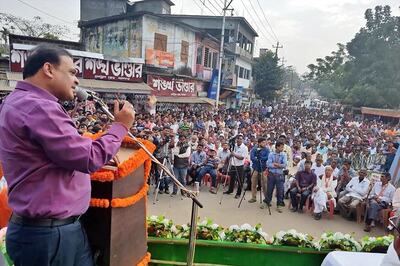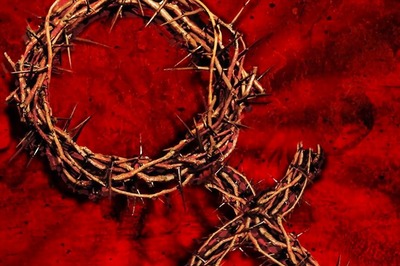
views
Much to the dismay of naysayers, the Congress, including Gandhis, are busy doing some course correction.
Last week, Congress chief Sonia Gandhi, Rahul Gandhi and former Prime Minister Manmohan Singh praised P V Narasimha Rao's contribution to the country and Congress. The occasion was 29th anniversary of the first union budget presented by Rao regime on July 24, 1991 celebrated by Telangana Congress unit where former president Pranab Mukherjee, Jairam Ramesh and P Chidambaram virtually addressed the gathering. Clearly, Gandhis do not want either the BJP or ruling Telegana Rashtriya Samiti in Telengana to usurp Rao’s legacy.
Internally, Sonia and Rahul Gandhi are now under pressure to come up with a new ‘Ayodhya doctrine.’ Some leaders belonging to the grand old party want Rahul to team up with ally Udhav Thackeray to pay a visit to Ayodhya and keep Prime Minister Narendra Modi from walking away with all credit for construction of Ram temple. According to this school of thought, post Supreme Court’s ‘unanimous’ verdict on the Ram temple issue, Rao’s failure to protect Babri Masjid on December 6, 1992 was no longer a political liability.
Telengana Congress chief Uttam Kumar Reddy read out Sonia’s letter saying, “P V Narasimha Rao was a much respected national and international figure. The Congress party takes pride in his many accomplishments and contributions. The birth centenary of Rao is an occasion to recall and pay tribute to a most scholarly and erudite personality who, after a long career in state and national politics, (became) the Prime Minister of the country at a time of grave economic crisis."
Had Rao lived on to see this day, the otherwise sombre politician would have allowed himself a hearty chuckle. In 2002, when he was alive and AICC session was held at Bangalore, both Rao and Manmohan Singh had almost lost their place in Congress history as architects of economic reforms. As if taking a cue from the party high command [read Sonia], the then Madhya Pradesh chief minister Digvijay Singh and Prithviraj Chavan moved an amendment in AICC’s economic resolution, asserting that the economic reforms were a brainchild of the late Rajiv Gandhi and that the Rao-Singh combine simply nudged the process forward. Rao was made to suffer more humiliation when the then Uttar Pradesh Congress chief Sriprakash Jaiswal declared that whenever the reins of power went into the hands of a member not belonging to the Nehru-Gandhi family, communal forces had gained strength. Rao was present at the Bangalore AICC podium when Digvijay and Prithviraj Chavan traced the origin of the Congress' economic record to Rajiv Gandhi. What was more bizarre was that Manmohan was made to sum up the debate on AICC economic resolution and accept Digvijaya-Chavan amendment.
For about three decades now, Sonia’s ties with Narasimha Rao are mired in mystery. A section of Congressmen who were in the thick of things during Rao era feel midway into his 1991-96 tenure, the then prime minister was reluctant to felicitate return of a member of Nehru-Gandhi family in the Congress. Rao was also of the view that Sonia, lacking in experience, had become a "puppet" in the hands of some of his arch-rivals within the grand old party.
There are several reasons why Sonia and Rahul are contemplating a U-turn on Rao. The present day Congress is bereft of most notable Rao baiters like Arjun Singh, Madhavrao Scindia, N D Tiwari, Sitaram Kesri, M L Fotedar, Sheila Dikshit, C K Jaffer Sharief, Rajesh Pilot, K Karunakaran, Priyaranjan Dasmunshi, Ratnakar Pandey, Vijay Bhaskar Reddy [all dead].
It can be argued that Sonia, when she took over as AICC chief in 1998, went by a majority opinion within the Congress against Rao and now changing track as per prevailing ‘pro-Rao’ sentiment in the party. Manmohan Singh and Jairam Ramesh, two vocal supporters of Rao, are currently Sonia’s close and trusted advisors.
The Congress charge sheet against Rao was lengthy going beyond his inept handling of the Ayodhya dispute. Tardy probe into the Rajiv Gandhi assassination case, allegations of corruption and unearthing of Hawala scandal that had maligned many Congress leaders remains fresh in the minds of many old-timers. It was October 1995, and general elections were round the corner, when prime minister Rao had ordered the hawala probe that “fixed” the political careers of many stalwarts. In a nutshell, hawala scandal involved Jain brothers who had illegally transferred funds amounting to $33 million from all parts of the world to a range of Indian leaders across parties in return for favours.
The list of accused included L K Advani, Madhavrao Scindia, Kamal Nath, Arjun Singh, N.D. Tiwari, Buta Singh, Bhajan Lal, V.C. Shukla and Sharad Yadav. While each accused got acquitted, Advani did not contest the 1996 elections and perhaps missed the chance of becoming Prime Minister when Atal Bihari Vajpayee was chosen to head the 13-day BJP government. Vajpayee became Prime Minister again in 1998 and ruled for 13 months before winning the 1999 elections for a five-year term.
In his book, Ayodhya: 6 December 1992, published after his death in 2006, Rao has argued on a singular point — that the BJP scuppered a possible solution to the temple tangle to keep the pot boiling. “It was me that they demolished,” he had rued.




















Comments
0 comment